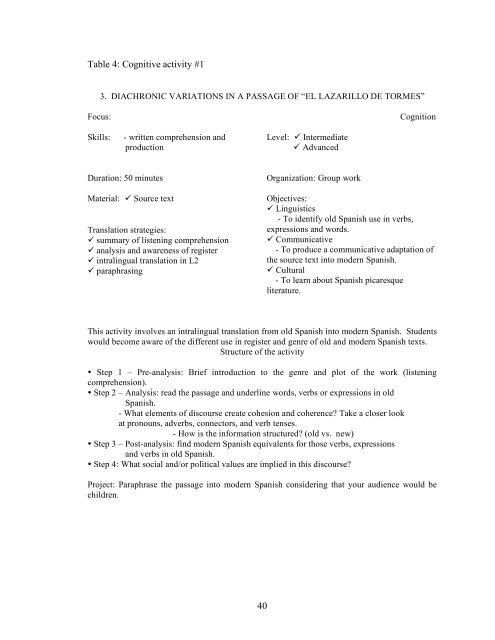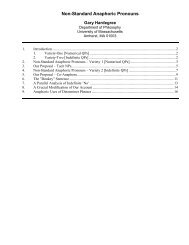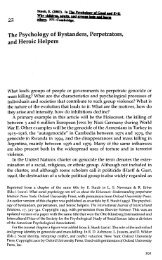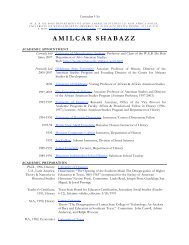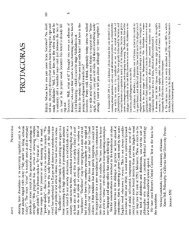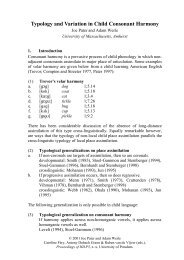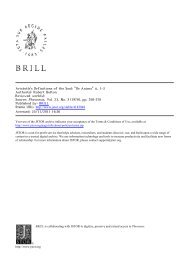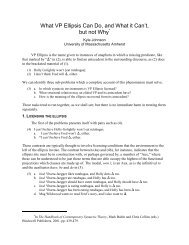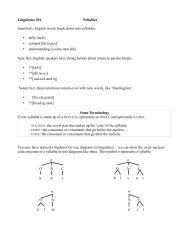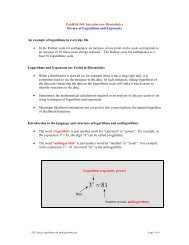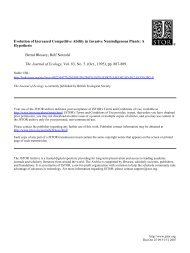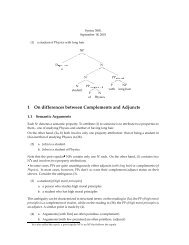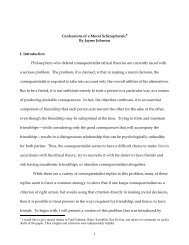rethinking translation in the second language classroom
rethinking translation in the second language classroom
rethinking translation in the second language classroom
Create successful ePaper yourself
Turn your PDF publications into a flip-book with our unique Google optimized e-Paper software.
Table 4: Cognitive activity #1<br />
3. DIACHRONIC VARIATIONS IN A PASSAGE OF “EL LAZARILLO DE TORMES”<br />
Focus: Cognition<br />
Skills: - written comprehension and<br />
production<br />
Duration: 50 m<strong>in</strong>utes<br />
Material: Source text<br />
Translation strategies:<br />
summary of listen<strong>in</strong>g comprehension<br />
analysis and awareness of register<br />
<strong>in</strong>tral<strong>in</strong>gual <strong>translation</strong> <strong>in</strong> L2<br />
paraphras<strong>in</strong>g<br />
40<br />
Level: Intermediate<br />
Advanced<br />
Organization: Group work<br />
Objectives:<br />
L<strong>in</strong>guistics<br />
- To identify old Spanish use <strong>in</strong> verbs,<br />
expressions and words.<br />
Communicative<br />
- To produce a communicative adaptation of<br />
<strong>the</strong> source text <strong>in</strong>to modern Spanish.<br />
Cultural<br />
- To learn about Spanish picaresque<br />
literature.<br />
This activity <strong>in</strong>volves an <strong>in</strong>tral<strong>in</strong>gual <strong>translation</strong> from old Spanish <strong>in</strong>to modern Spanish. Students<br />
would become aware of <strong>the</strong> different use <strong>in</strong> register and genre of old and modern Spanish texts.<br />
Structure of <strong>the</strong> activity<br />
Step 1 – Pre-analysis: Brief <strong>in</strong>troduction to <strong>the</strong> genre and plot of <strong>the</strong> work (listen<strong>in</strong>g<br />
comprehension).<br />
Step 2 – Analysis: read <strong>the</strong> passage and underl<strong>in</strong>e words, verbs or expressions <strong>in</strong> old<br />
Spanish.<br />
- What elements of discourse create cohesion and coherence? Take a closer look<br />
at pronouns, adverbs, connectors, and verb tenses.<br />
- How is <strong>the</strong> <strong>in</strong>formation structured? (old vs. new)<br />
Step 3 – Post-analysis: f<strong>in</strong>d modern Spanish equivalents for those verbs, expressions<br />
and verbs <strong>in</strong> old Spanish.<br />
Step 4: What social and/or political values are implied <strong>in</strong> this discourse?<br />
Project: Paraphrase <strong>the</strong> passage <strong>in</strong>to modern Spanish consider<strong>in</strong>g that your audience would be<br />
children.


